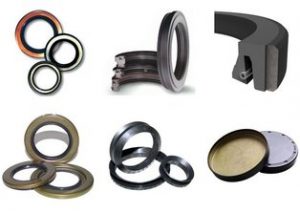 Selecting the right seal: The first step in extending seal life
Selecting the right seal: The first step in extending seal life
January 30, 2017 REDWIRE is news you can use from leading suppliers. Powered by FRASERS.
Posted by Daemar Inc.
Daemar manages the sourcing and delivery of millions of Essential Components to the manufacturing and MRO marketplace. I... Read more
Subscribe
Free REDWIRE e-newsletter

Daemar supplies a wide variety of shaft seal products. They include axle seals, oil seals, v-rings, bearing isolators and much more. These products have been designed to offer outstanding value through a combination of quality, performance and low total cost of ownership. However, to get the most out of these products, it’s important to choose the right shaft seal for the job. Daemar has made this easier for customers by providing some tips for seal selection on the company blog.
The importance of seal selection
Selecting the proper radial shaft seal can be critical to ensuring long service life for bearings, pumps, gear boxes and motors. The purpose of radial shaft seals is to both retain lubricants and exclude contaminants. If a seal is not working properly, eventually the bearings will fail.
Operating environment
The operating environment is a key consideration when selecting a seal. Any unique demands posed by the environment should be kept in mind. Some important considerations include operating temperature, pressure, fluid compatibility, contaminants, shaft motion type, shaft surface speed, shaft hardness and surface finish, shaft eccentricity, and geometry of the shaft and housing bore.
Seal material and design
Shaft seals are made up of a number of components, and each plays a role in the overall performance. The casing gives the seal structure and rigidity, and provides a static seal with the bore. It is typically made from carbon steel, either with or without a rubber cover. Seal casings are available with many design variations to suit the application’s specific geometric requirements.
Another key component is the sealing lip. It maintains a dynamic seal with the shaft. This component can be made from a variety of materials, and the most compatible elastomer should be selected based on the assessment of the operating environment.
Just some of the materials available include silicone rubber, nitrile rubber, fluorinated rubber and polyacrylate rubber. The Daemar website makes it easy to compare the benefits of these various materials, as it provides information on their performance, chemical resistance, operating temperature ranges and more.
For additional information, visit the company’s website.
Share
Posted by Daemar Inc.
Daemar manages the sourcing and delivery of millions of Essential Components to the manufacturing and MRO marketplace. I... Read more
